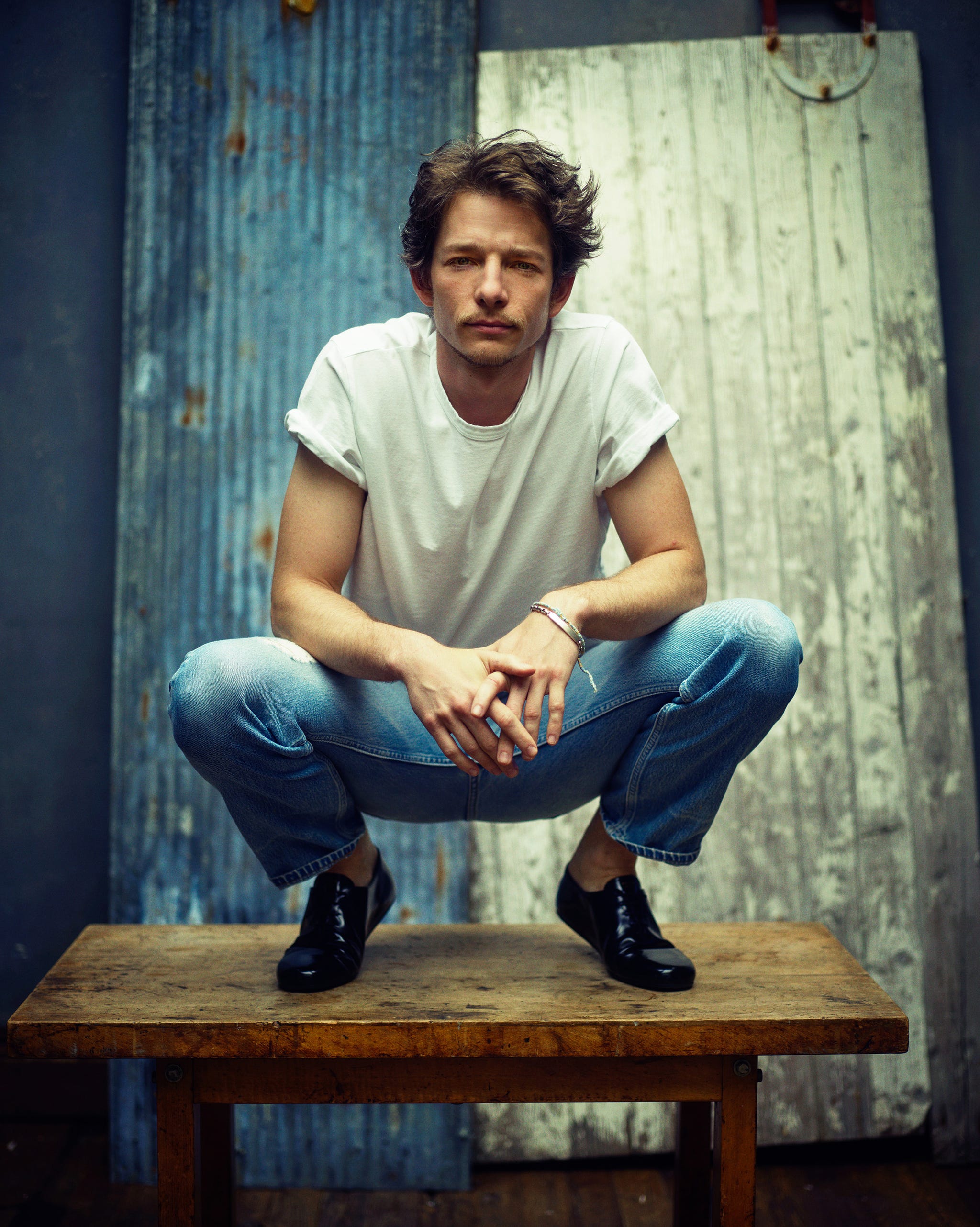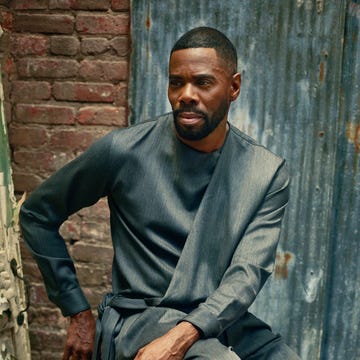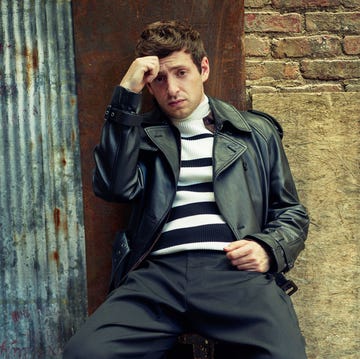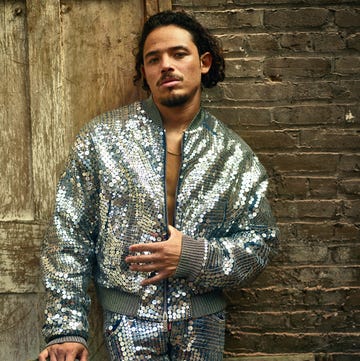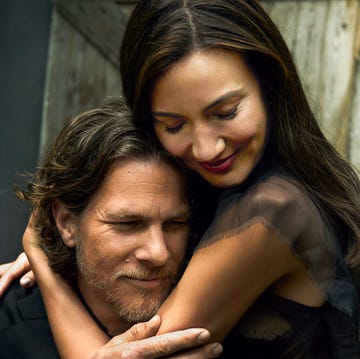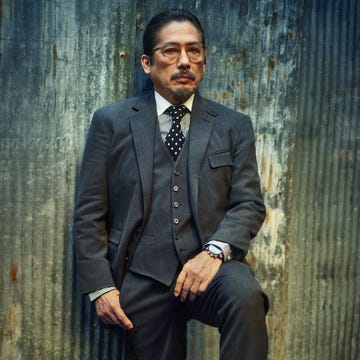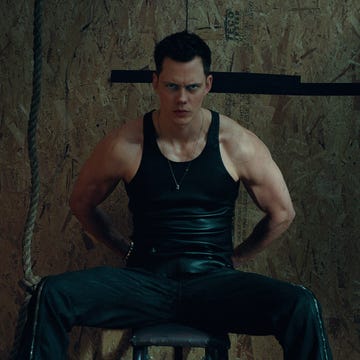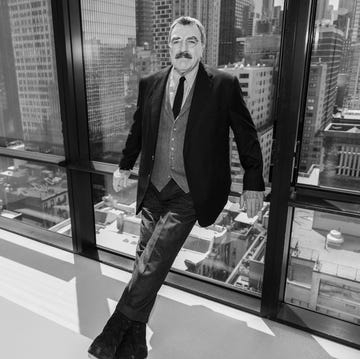Mike Faist is trying to convince me he doesn’t like being an actor and that he’s not very good at it. But lying is a necessary part of what he calls the “curse” of being famous, and I think he’s doing it now. Sometimes, he says, when people recognize him in his neighborhood and ask, Are you the dude from that thing? “I’ll just lie to them. They’ll be like, ‘Are you Mike?’ I’m like, ‘Who?’”
He thinks fame is kind of stupid. It doesn’t suit him. “At the end of the day it’s kind of ridiculous that we’re doing this interview, because I’m just some guy who has a job. Sometimes I have a job, even.”
The thirty-two-year-old Faist is indeed the guy from that thing, if the thing you’re thinking of is, for example, last spring’s Challengers. Faist played Art Donaldson, a tennis star with a nervous heart and fading game who’s in a ménage à trois not entirely of his own making with a steely Zendaya and a swashbuckling Josh O’Connor. If you haven’t seen it, know this: I can’t decide if I should call it a tennis movie with an unbelievable amount of sex in it or a sex movie with an enormous amount of tennis in it.
But no one seems to recognize him now, as we’re walking his dog—a beefy rescue named Austin who has nearly perfect manners—in the leafy Brooklyn neighborhood of Park Slope. A week ago, Faist closed on a new apartment around the corner, and he’s all moved in thanks to a hand from a visiting friend from back home in Ohio. Tomorrow, he, the friend, and Austin will head upstate. The plan when they get there? “Do nothing.”
Until then, he’s giving me that whole rigmarole about how if he could do anything other than acting, he would. He moved to New York at seventeen—one of an untold number of broke midwesterners with stars in their eyes, aiming for a theater career—and eventually found success, culminating in Broadway’s Dear Evan Hansen. He was the best part of Steven Spielberg’s West Side Story in 2021 as a strung-out, twitchy Riff. And this summer he appeared alongside Austin Butler (no relation to Faist’s dog) in the motorcycle flick The Bikeriders.
He’d return to theater (“why not?”) if given the chance, but right now Hollywood has his number. This morning, he talked with a filmmaker about a new script—no, unfortunately he can’t tell me anything about it other than that he’s considering it, but he can tell me what that consideration looks like for him. Faist is discerning about the roles he picks, if not methodical. (At least, “that’s what the data has shown,” he jokes, with a nod of apology to his agents, who he thinks probably wouldn’t mind a little less discernment.) He claims that he talks “ad nauseam about my existential crisis about taking a project” to whoever’s around, but “at the end of the day, it ends up being—you know, unfortunately it comes down to you. Only you have the answer for it.”
This is one of Faist’s most appealing qualities. The combination of self-deprecating humor and thoughtfulness could add up to a neurotic vibe, but Faist has none of that. He’s self-assured and at ease with the reality that only he knows where to go next. You can tell a lot about a person from how their dog reacts to them, and Austin trots alongside Faist contentedly, relaxed in his master’s leadership. Frankly, I find myself in the same mood.
Maybe he owes some of it to what he’s been through over the past few years. During Covid, Faist moved back to his hometown of Gahanna, Ohio, to be physically closer to his dad, who was sick. A couple years later, his father and his grandfather died in close succession. Or maybe it’s that he’s good at carpentry. Faist stuck around Ohio and bought a house, which he renovated himself. His grandfather was a self-taught electrician, and he passed that wisdom down. Faist shows me a video of demolition day—he and a friend in full hazmat regalia—to prove his chops. The process was important to him. He found it meditative to “just focus on one thing.” But it sounds like the end result wasn’t too bad, either. What’s the vibe? Architectural marvel? Shabby chic? “Come on, man,” he says. “The house was built in 1930. It’s old.”
This is part of why I don’t believe that Faist would do anything other than act if he could: He so obviously does have real-world skills. And he very much lives in the real world, too. He likes to rock climb. He’s wearing a pink-and-blue friendship bracelet around his wrist and a Levi’s T-shirt. (“What’s Levi’s?” I ask, assuming it’s a dive bar with self-consciously hip merch or maybe a hardware store back in Ohio. “Levi’s jeans,” he says, charitably leaving off “you idiot.”) Faist shops at the same grocery store I do, calls his dog “bud,” and refers to acting as his “job” or his “gig” more times than I can count during the two hours we spend together.
If it sounds like I’m telling you all these great things about Mike Faist, though, don’t forget: He’s a skilled prevaricator. And the lie that he’s been telling me for the past two hours cracks open fully when we sit down for a beer—he manages to order something called “Baby Kittens” without sounding stupid—and he lets loose about the joy he gets from this “gig.”
It’s all about the characters for him. He puts in a huge amount of work coming up with detailed backstories for all his characters. For example, Art, Faist’s Challengers character, eats the same breakfast every day: eight eggs and a bowl of oatmeal. So what did Faist eat for breakfast while playing him? Eight eggs and a bowl of oatmeal. Faist feels like he is involved in intimate relationships with the people he plays, so much so that when he’s wrapped a project and he’s done playing a character, Faist actually misses him. “It’s the best part,” he says, “all the invention and the imagination.”
Fine, he’ll admit it. With a half smile, he comes clean: “There are some fun things about being an actor.”
Photographed by Mark Seliger
Styled by Chloe Hartstein
Hair by Kevin Ryan using GO247 & UNITE
Grooming by Jessica Ortiz for La Mer
Makeup by Rebecca Restrepo using Lisa Eldridge Beauty
Production by Madi Overstreet and Ruth Levy
Set Design by Michael Sturgeon
Nails by Eri Handa using Dior
Tailoring by Yana Galbshtein
Design Director Rockwell Harwood
Contributing Visual Director James Morris
Executive Producer, Video Dorenna Newton
Executive Director, Entertainment Randi Peck

